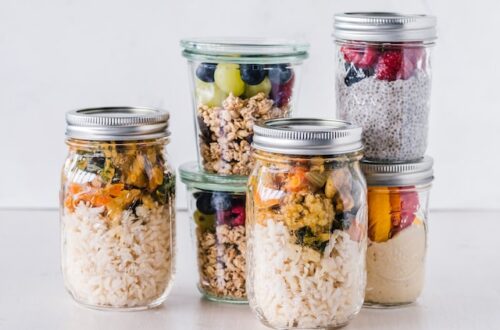
Cooking with Dry Fruits: Recipes to Elevate Your Dishes
Dry fruits, often overlooked as mere snacks or occasional dessert toppings, possess a remarkable ability to elevate dishes across various cuisines. These delectable gems, derived from fresh fruits that have been dehydrated to preserve their flavor and nutrients, hold a special place in kitchens around the world. From the sweet indulgence of dates and figs to the nutty crunch of almonds and pistachios, dry fruits bring a delightful array of textures, flavors, and nutritional benefits to a wide range of dishes.
The versatility of dry fruits knows no bounds, as they seamlessly transition from sweet to savory, from appetizers to desserts, and from traditional recipes to modern interpretations. Their concentrated sweetness adds depth and complexity to savory dishes, while their nutty richness enhances the indulgence of sweet treats. Whether used as a topping, filling, or main ingredient, dry fruits have the power to transform ordinary dishes into extraordinary culinary experiences..
Dry fruits boast an impressive nutritional profile, packed with essential vitamins, minerals, and antioxidants. Their long shelf life and convenience make them accessible ingredients for both professional chefs and home cooks, encouraging culinary experimentation and innovation. Let’s explore some sweet and savory recipes featuring dry fruits, along with the reasons why you should incorporate them into your diet for a taste and health sensation.
Sweet Treats: Dry Fruits Elevate Your Desserts
Shahi Tukda:
- Fry bread slices until golden brown, then soak them in saffron-infused sugar syrup.
- Layer the soaked bread slices with thickened sweetened milk (rabri) and top with a generous sprinkle of chopped dry fruits like almonds, pistachios, and cashews.
English Fruitcake:
- Prepare a classic fruitcake batter with mixed dried fruits such as raisins, currants, chopped dates, and candied citrus peel.
- Bake until golden and fragrant, then brush with a rum or brandy glaze for added richness and flavor.
Date and Walnut Sticky Toffee Pudding:
- Make a moist date and walnut cake, then soak it in a warm toffee sauce made from butter, brown sugar, and cream.
- Serve the pudding warm with a scoop of vanilla ice cream or a dollop of whipped cream for a decadent dessert.
Besan Ladoo with Dry Fruits:
- Roast chickpea flour (besan) in ghee until golden brown, then mix with powdered sugar and chopped dry fruits such as almonds, cashews, and raisins.
- Shape the mixture into round balls, and garnish each ladoo with a whole almond or pistachio for an irresistible Indian sweet.
Fig and Almond Tart:
- Prepare a buttery tart crust and fill it with a creamy almond frangipane filling.
- Arrange sliced fresh figs on top and bake until the crust is golden and the filling is set.
- Drizzle with honey and sprinkle with toasted almond slices before serving.
Savory Delights: Savory Dishes Starring Dry Fruits
Chicken Biryani with Cashews and Raisins:
- Layer marinated chicken pieces with fragrant basmati rice, fried onions, and a generous sprinkling of toasted cashews and raisins.
- Cook the biryani on low heat until the chicken is tender and the rice is fluffy, then garnish with fresh cilantro and mint before serving.
English Stilton and Walnut Salad:
- Toss crisp salad greens with crumbled Stilton cheese, toasted walnuts, and dried cranberries.
- Drizzle with a balsamic vinaigrette dressing for a savory and satisfying salad.
Indian-Inspired Paneer Kofta with Dry Fruits:
- Mix crumbled paneer with mashed potatoes, chopped mixed dry fruits such as almonds, cashews, and raisins, along with spices like garam masala and ground coriander.
- Shape the mixture into balls, coat with breadcrumbs, and shallow fry until golden brown and crispy.
- Serve the paneer kofta with a creamy tomato-based gravy flavored with spices for a delicious and satisfying dish.
Stuffed Bell Peppers with Quinoa and Dried Apricots:
- Mix cooked quinoa with chopped dried apricots, toasted pine nuts, and crumbled feta cheese.
- Stuff the mixture into halved bell peppers and bake until the peppers are tender and the filling is golden and fragrant.
Dal with Tamarind and Date Chutney:
- Prepare a traditional Indian dal (lentil stew) and serve it with a tangy and sweet tamarind and date chutney on the side.
- The chutney is made by simmering tamarind pulp, dates, jaggery (or brown sugar), and spices until thick and syrupy, then cool before serving.
Health benefits of incorporating dry fruits into your diet
Incorporating dry fruits into your cooking can provide numerous nutritional advantages due to their dense concentration of essential vitamins, minerals, fiber, and antioxidants. Here are some key health benefits of including dry fruits in your diet:
- Rich Source of Nutrients: Dry fruits are packed with essential nutrients such as vitamins (including vitamin E, vitamin K, and certain B vitamins), minerals (including potassium, magnesium, calcium, and iron), and dietary fiber. These nutrients are vital for various bodily functions, including energy production, bone health, immune function, and cell maintenance.
- Heart Health: Many dry fruits, such as almonds, walnuts, and pistachios, contain heart-healthy fats, including monounsaturated and polyunsaturated fats. These fats help lower levels of LDL (bad) cholesterol and triglycerides, thus reducing the risk of heart disease and stroke. Additionally, the high antioxidant content of dry fruits can help reduce inflammation and oxidative stress, further supporting heart health.
- Improved Digestion: Dry fruits are excellent sources of dietary fiber, which promotes healthy digestion and regular bowel movements. Fiber adds bulk to stool, helping prevent constipation and promoting overall gut health. Prunes, in particular, are known for their natural laxative effects and can help alleviate constipation.
- Weight Management: Despite their calorie density, dry fruits can benefit weight management when consumed in moderation. The fiber and protein content of dry fruits helps increase feelings of fullness and satiety, reducing overall calorie intake and aiding weight loss or weight maintenance efforts.
- Blood Sugar Control: Some dry fruits, such as dates, prunes, and figs, have a low glycemic index (GI), meaning they cause a slower and more gradual increase in blood sugar levels compared to high-GI foods. This can help stabilize blood sugar levels, making dry fruits suitable for individuals with diabetes or those aiming to manage their blood sugar levels.
- Bone Health: Dry fruits like almonds, figs, and prunes are rich in calcium, magnesium, and phosphorus, which are essential minerals for maintaining strong and healthy bones. Regular consumption of these dry fruits can help prevent osteoporosis and promote bone density, especially in older adults.
- Antioxidant Protection: Dry fruits are loaded with antioxidants, including vitamins C and E, polyphenols, and flavonoids. These antioxidants help neutralize harmful free radicals in the body, reducing oxidative stress and inflammation, and lowering the risk of chronic diseases such as cancer, heart disease, and neurodegenerative disorders.
- Energy Boost: Dry fruits are concentrated sources of natural sugars, carbohydrates, and essential nutrients, making them an excellent energy-boosting snack. Whether eaten on their own or incorporated into meals or snacks, dry fruits provide a quick and convenient source of energy to fuel your day.
Note: Remember to enjoy dry fruits in moderation as part of a balanced diet for optimal health benefits.
Dry Fruit Hacks: Tips & Tricks
Sharing below some expert tips and tricks for selecting, storing, and using dry fruits in your recipes:
Selecting Dry Fruits:
- Quality Check: Choose dry fruits that are plump, uniformly colored, and free from mold, discoloration, or signs of insect damage. Avoid fruits that appear overly shriveled or have an off odor.
- Look for Unsweetened Options: Opt for unsweetened dry fruits whenever possible to avoid added sugars and preservatives. If choosing sweetened varieties, select those sweetened with natural sugars like fruit juice rather than refined sugars.
- Inspect Packaging: Check the packaging for any tears, punctures, or signs of damage. Opt for packages that are securely sealed and airtight to maintain freshness.
- Check Expiry Dates: Always check the expiration or best-by dates on the packaging to ensure freshness. Choose products with a longer shelf life to maximize freshness.
Storing Dry Fruits:
- Cool, Dry Place: Store dry fruits in a cool, dry place away from direct sunlight, moisture, and heat. Excessive heat and humidity can cause dry fruits to spoil or become rancid.
- Airtight Containers: Transfer dry fruits to airtight containers or resealable bags to help preserve their freshness and prevent them from absorbing odors or flavors from other foods.
- Refrigeration: While not always necessary, storing more perishable dry fruits such as nuts and seeds in the refrigerator can extend their shelf life and prevent them from going rancid, especially in warmer climates.
- Freezing: Dry fruits can also be stored in the freezer for long-term preservation. Place them in airtight containers or freezer bags and label them with the date to ensure freshness.
Using Dry Fruits in Recipes:
- Rehydration: If using dried fruits in recipes that require moisture, such as baking or cooking, consider rehydrating them beforehand by soaking them in warm water or fruit juice. This will plump up the fruits and enhance their flavor and texture.
- Chopping and Grinding: Depending on the recipe, you may need to chop or grind dry fruits before incorporating them. Use a sharp knife or food processor to achieve the desired texture, whether it’s finely chopped, coarsely chopped, or ground into a powder.
- Mix and Match: Experiment with different combinations of dry fruits in your recipes to add flavor, texture, and nutritional variety. Mix and match fruits like raisins, dates, figs, apricots, prunes, and cranberries to create unique flavor profiles.
- Toasting: Toasting nuts and seeds before adding them to recipes can enhance their flavor and aroma. Simply spread them out on a baking sheet and toast in the oven at a low temperature until golden brown and fragrant.
- Storage in Recipes: When adding dry fruits to recipes like cookies, cakes, salads, or savory dishes, consider the moisture content and adjust the recipe accordingly to prevent the fruits from becoming too soggy or dry.
Master these dry fruit hacks for endless culinary creations! From picking the freshest to unlocking hidden flavors, these tips will ensure your dried fruits stay vibrant and versatile in every dish.
Beyond the Deliciousness
Cooking with dry fruits offers endless opportunities to elevate your dishes with unique flavors, textures, and visual appeal. Whether you’re cooking for yourself, family, or guests, incorporating dry fruits into your recipes is sure to take your culinary creations to the next level.
So, the next time you browse the grocery aisles, don’t just reach for the candy bars. Consider grabbing a handful of dried fruit instead. It’s a delicious and healthy way to elevate your diet. With a little creativity, you can transform your dishes into flavor explosions that celebrate the best of Indian and global cuisine.


You May Also Like

7 Ways Pilates Can Keep You Injury-Free During Exercise
19 December 2023
10 Quick and Easy Healthy Meal Prep Ideas for Busy Weekdays
21 October 2023
